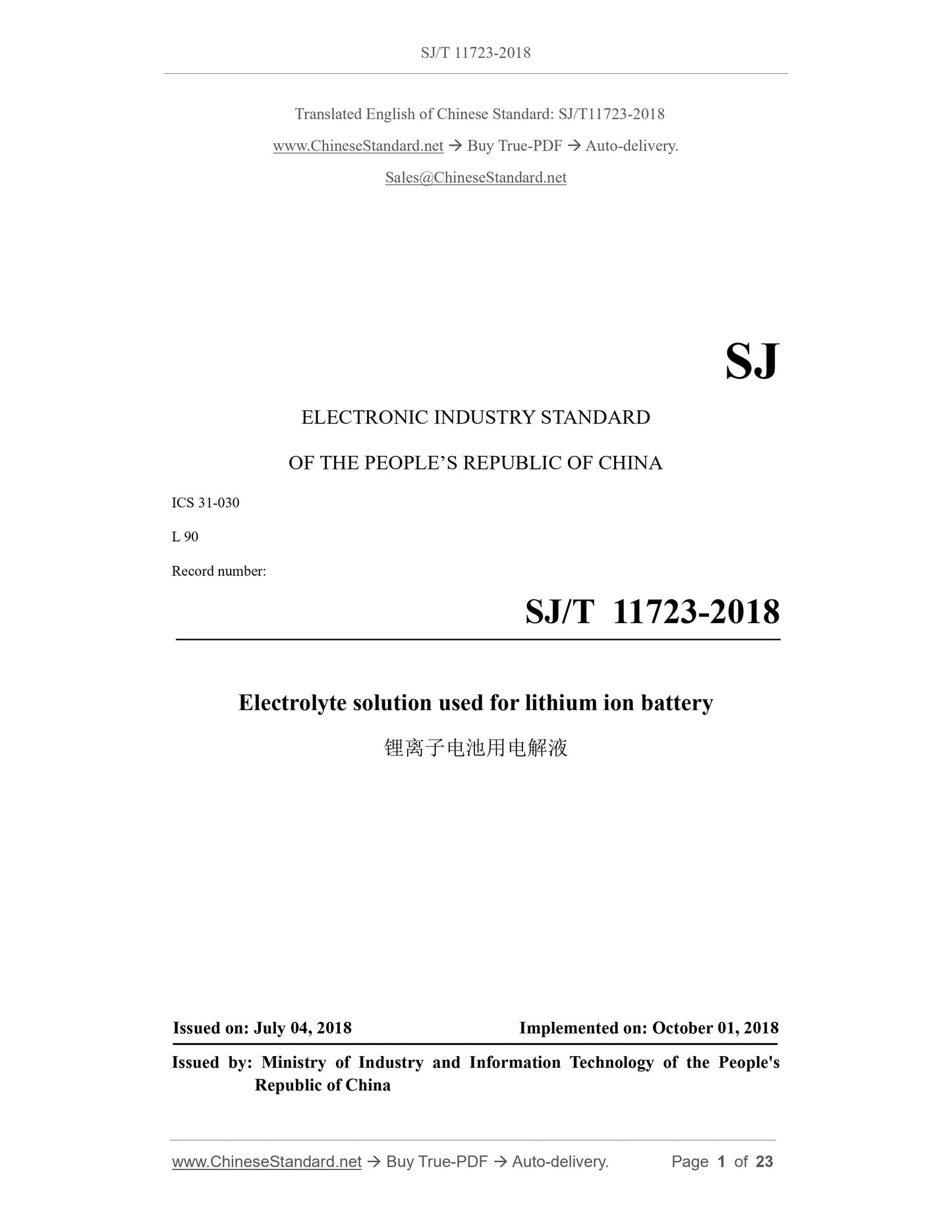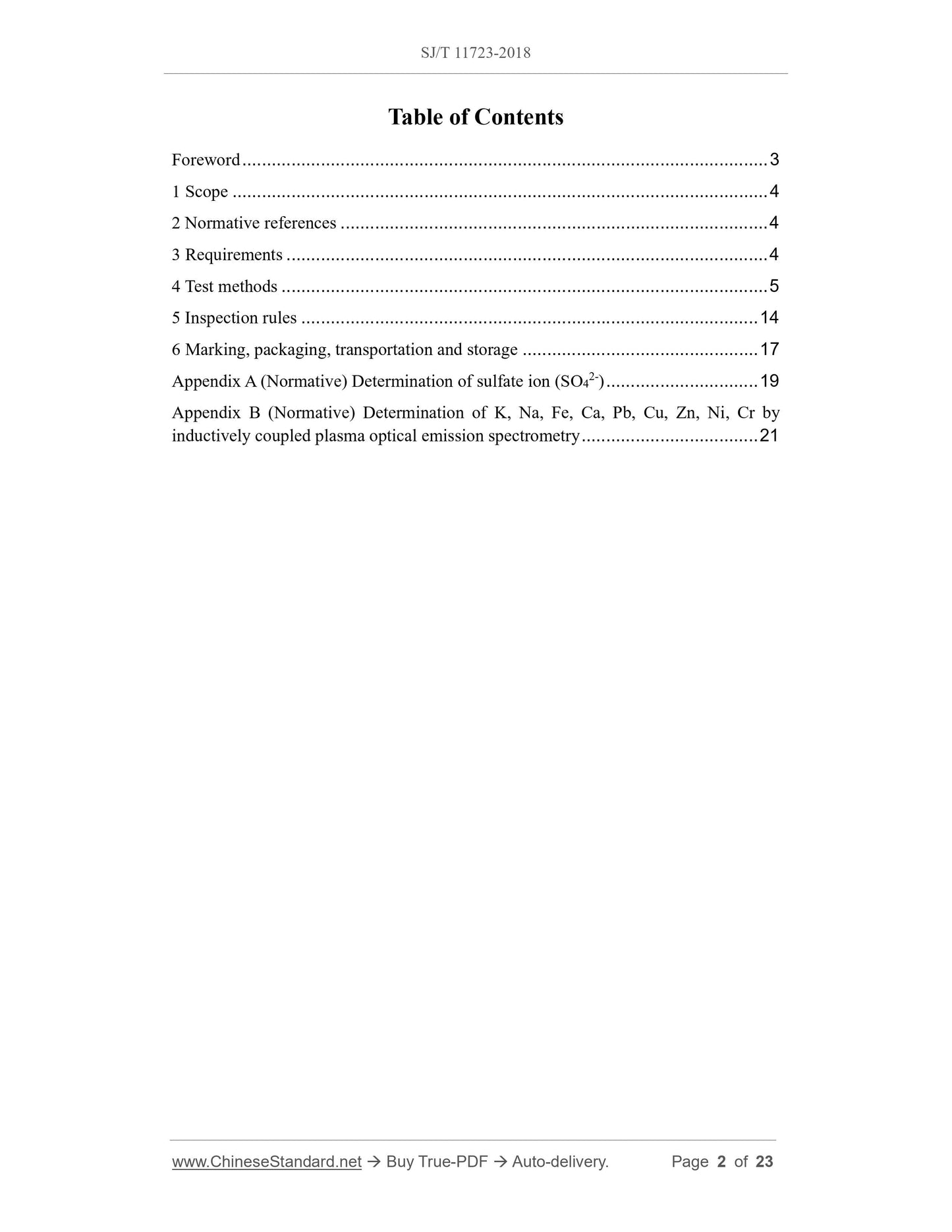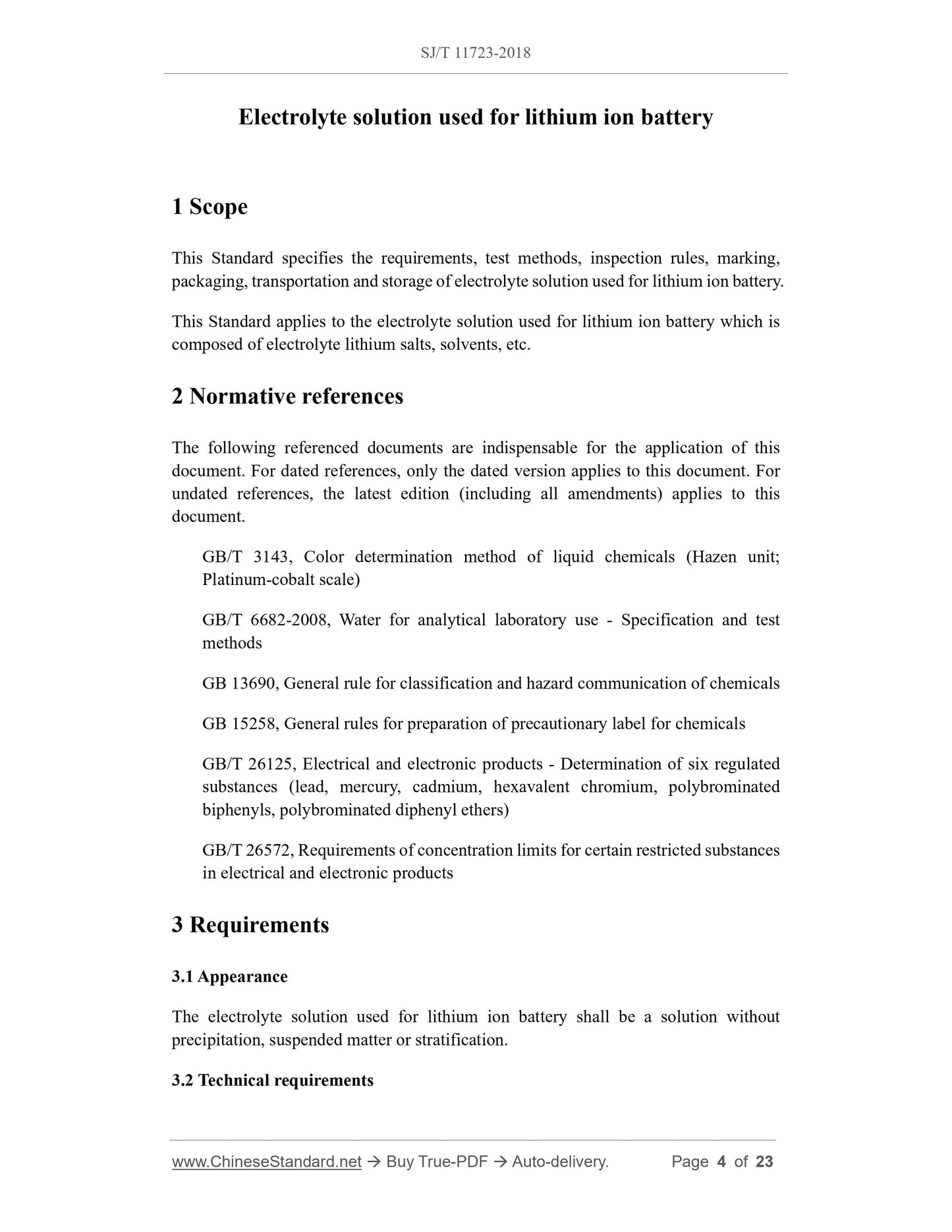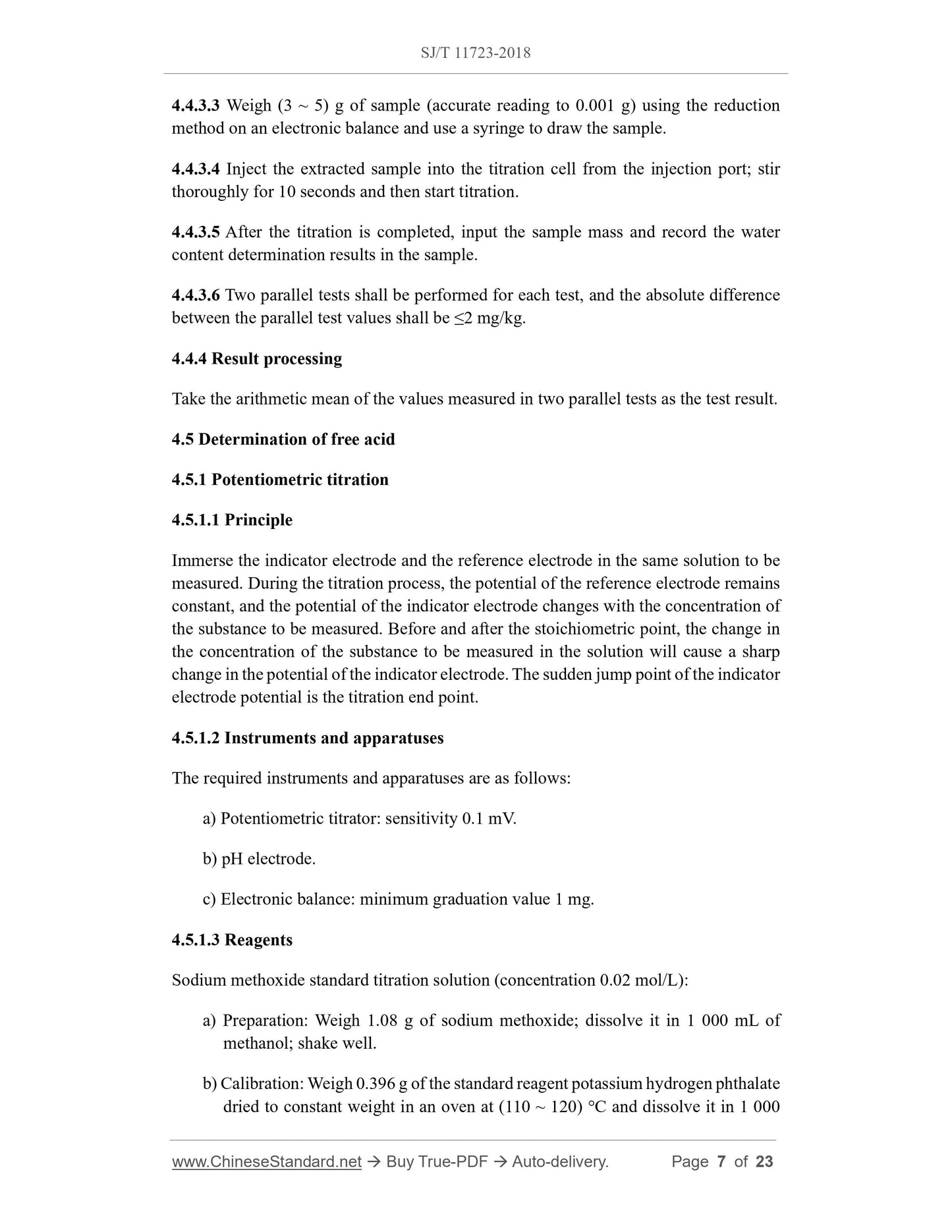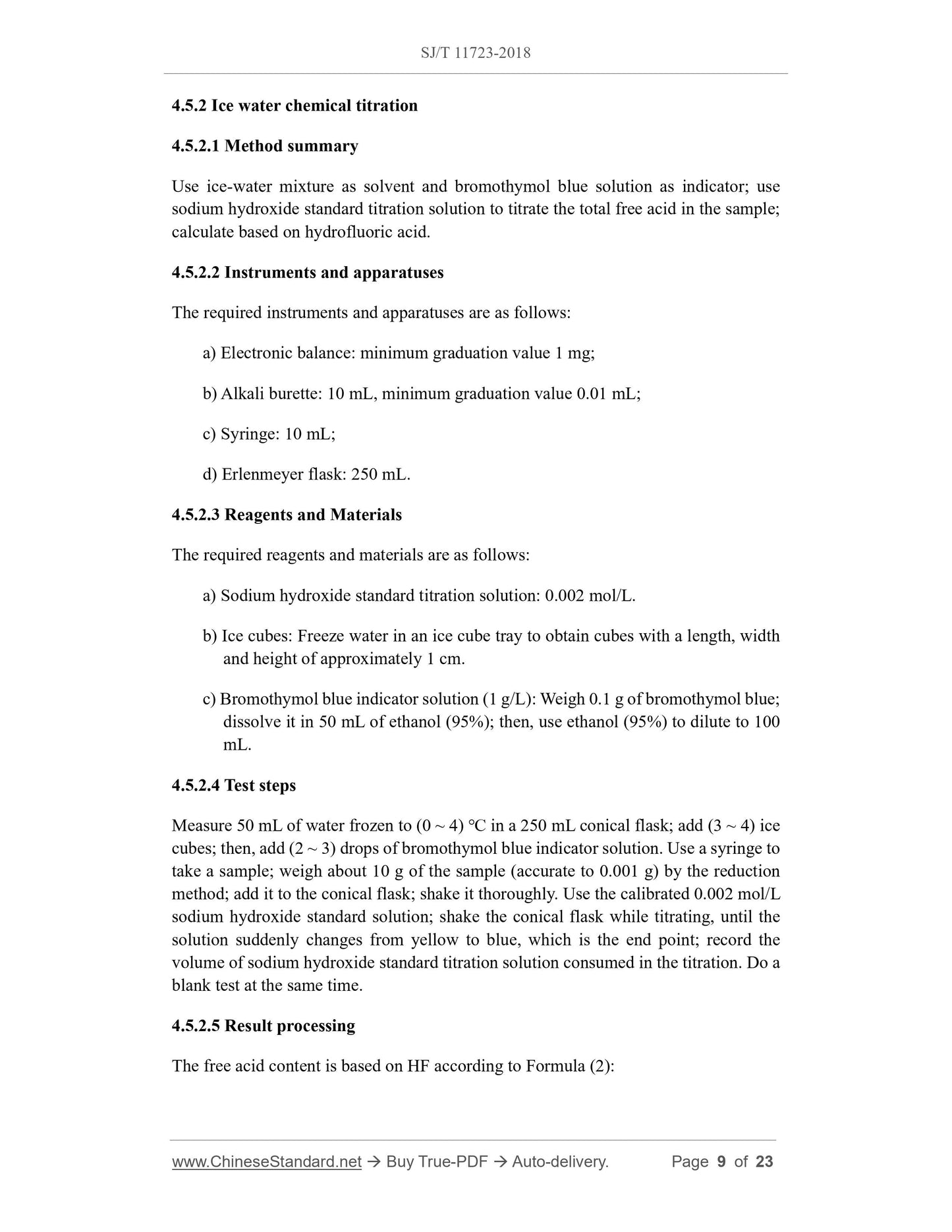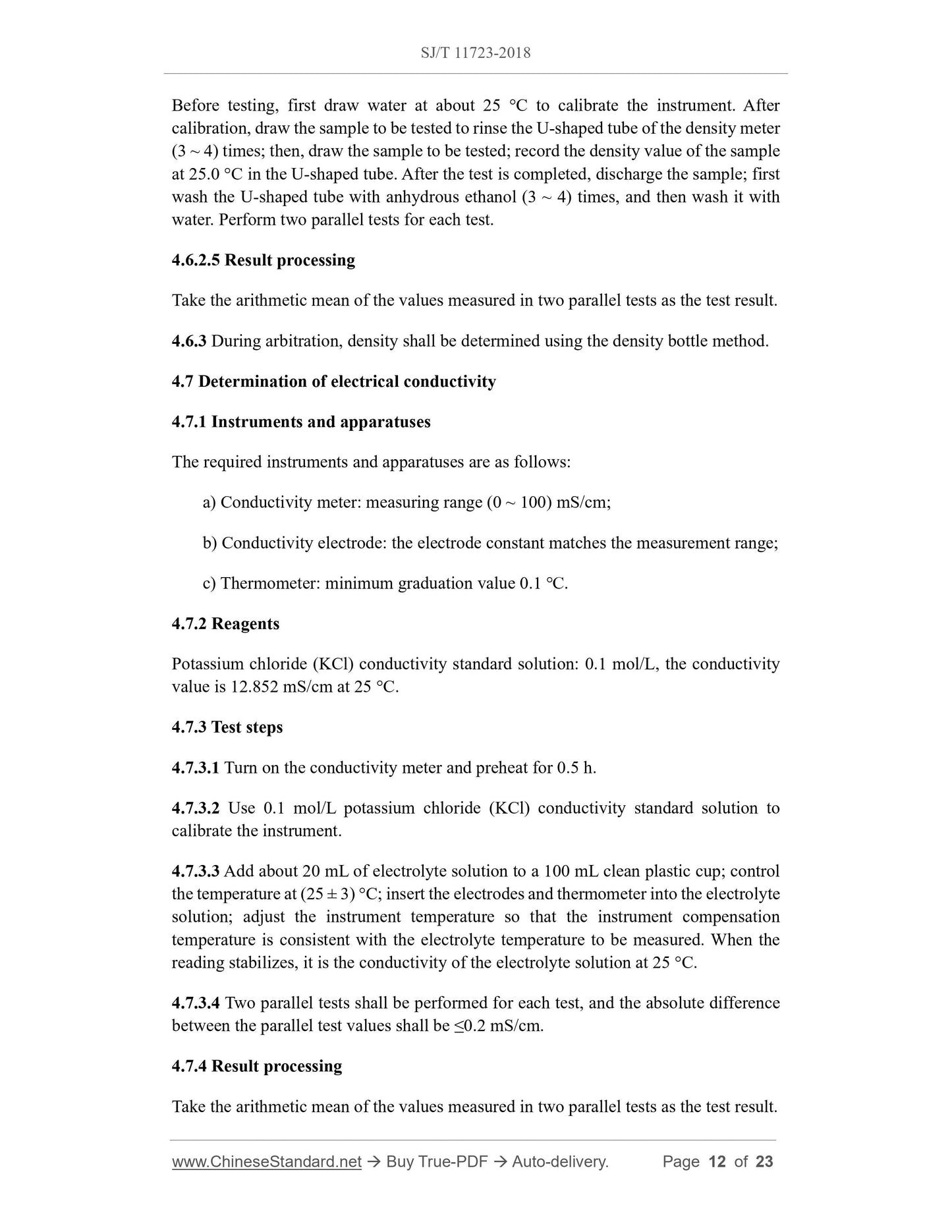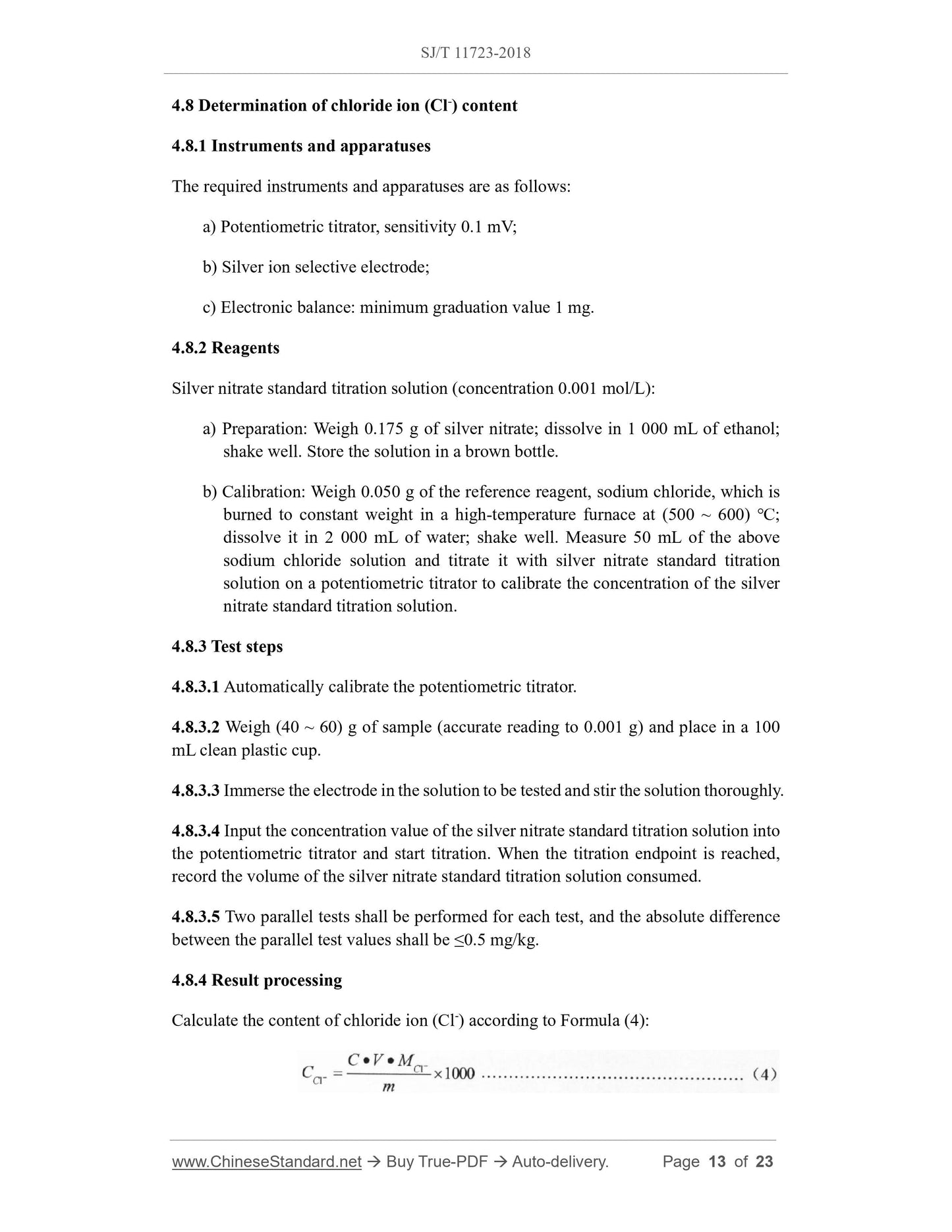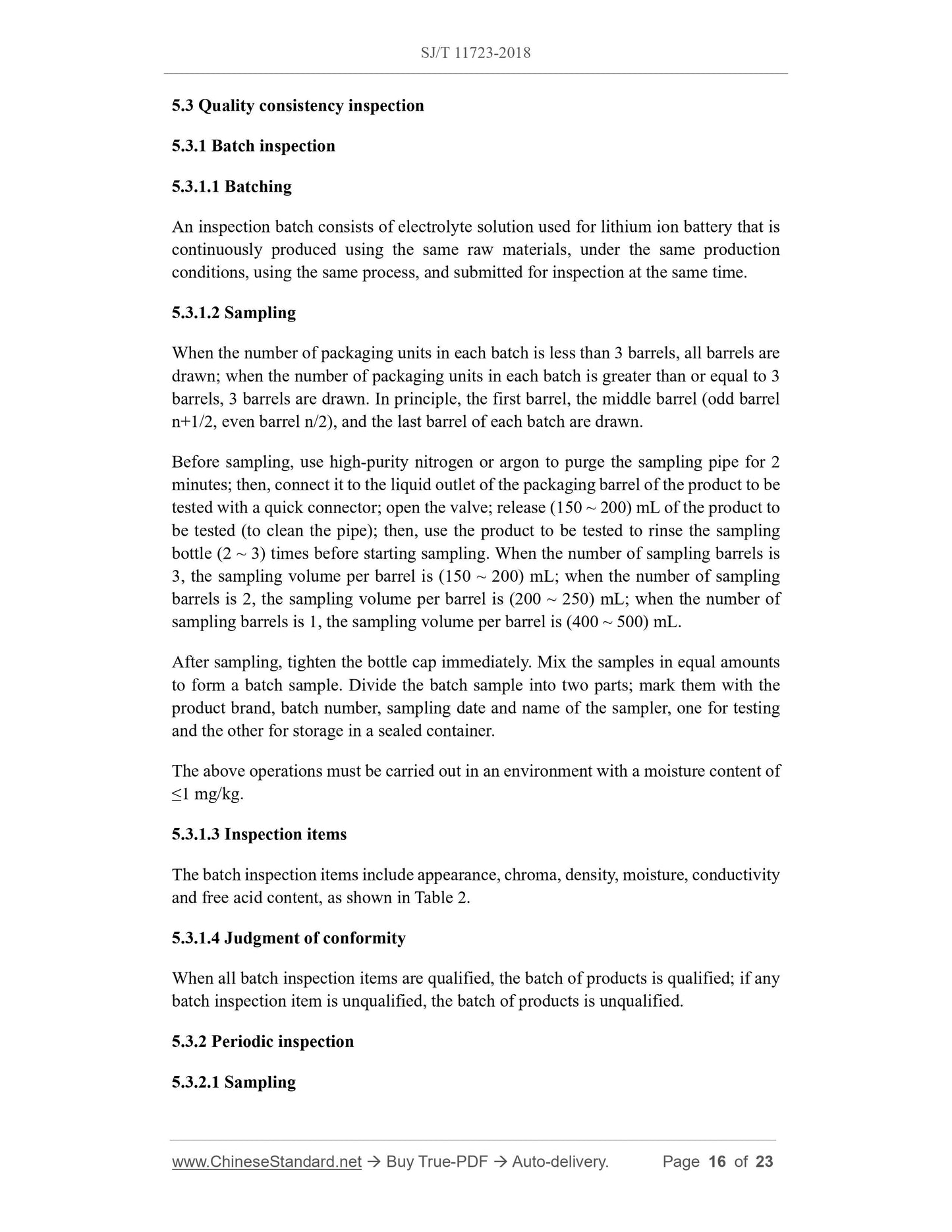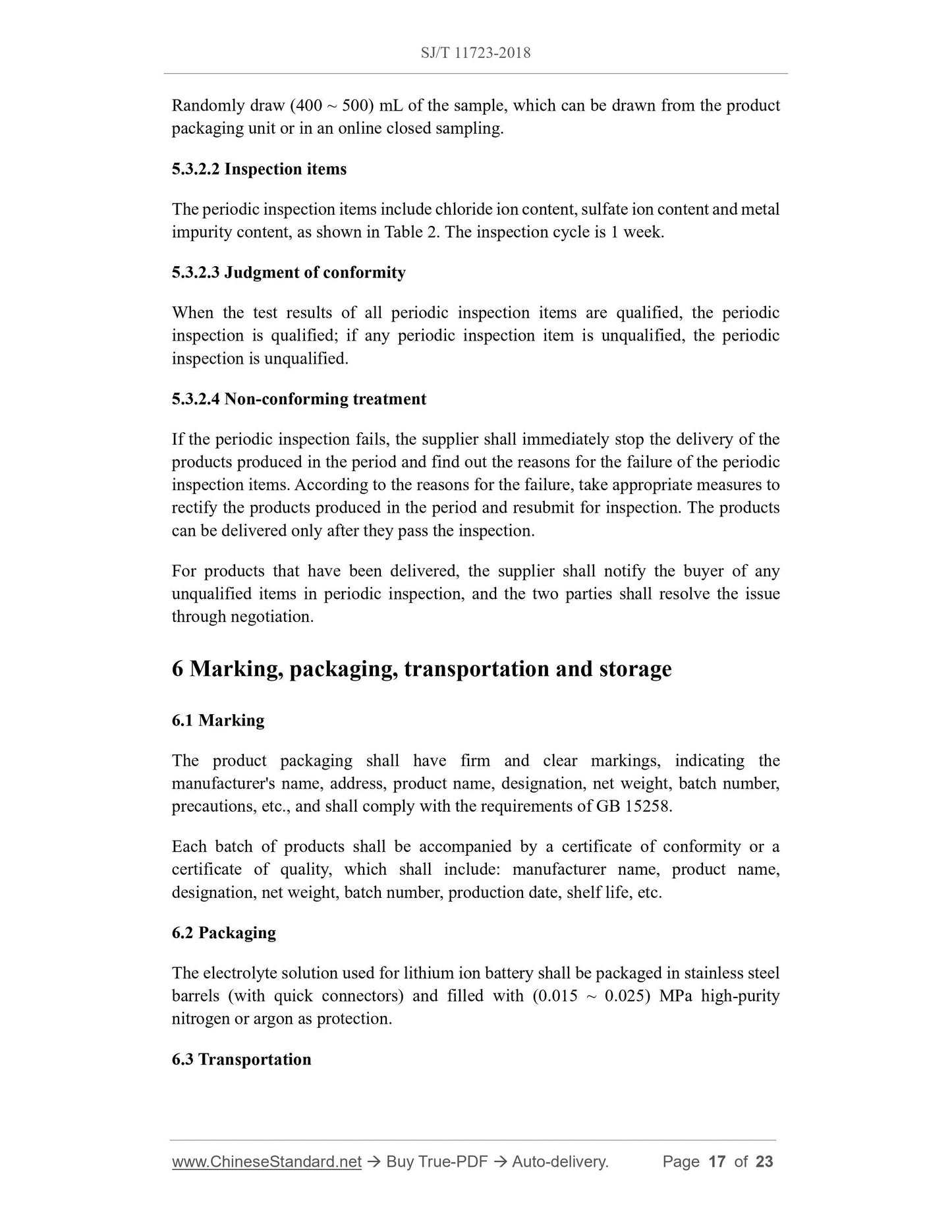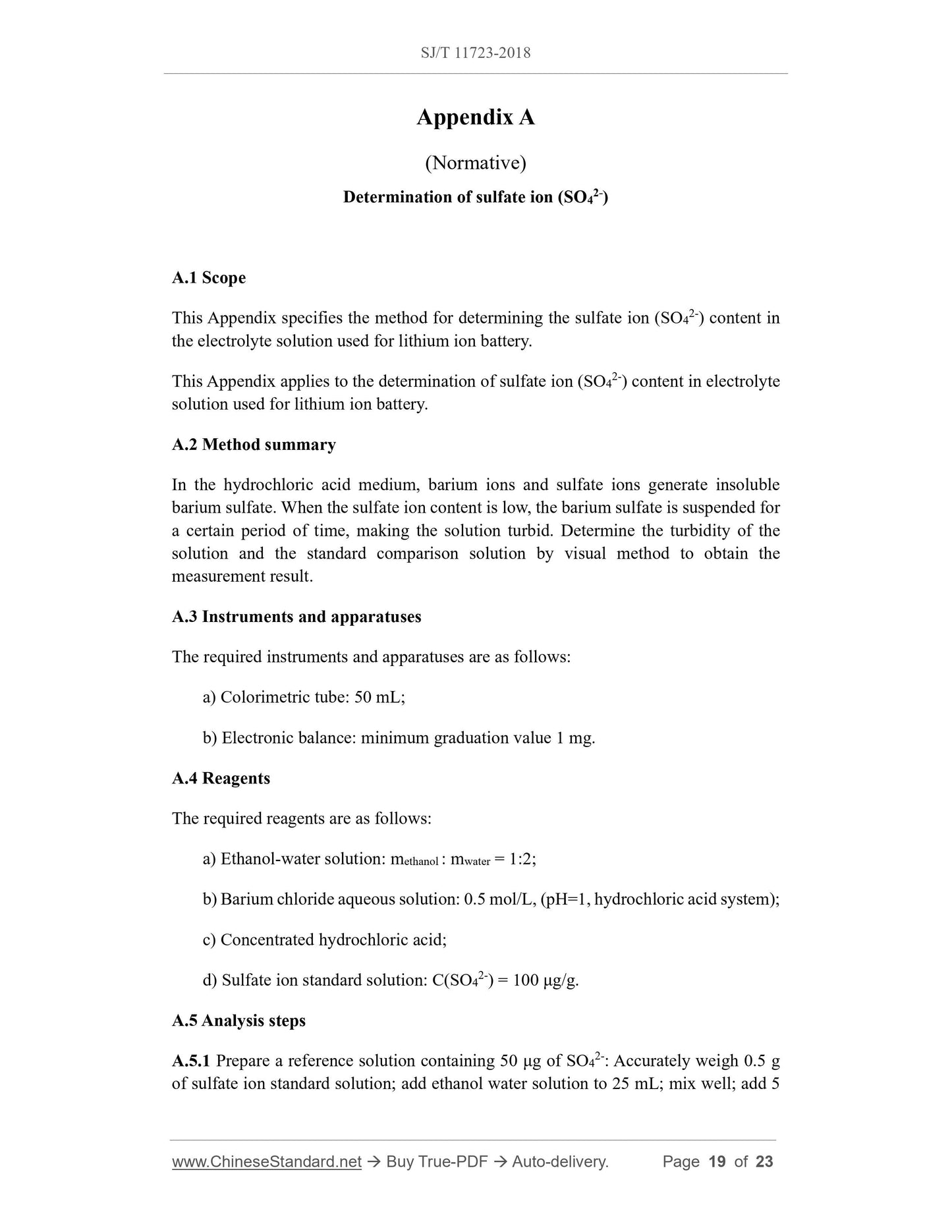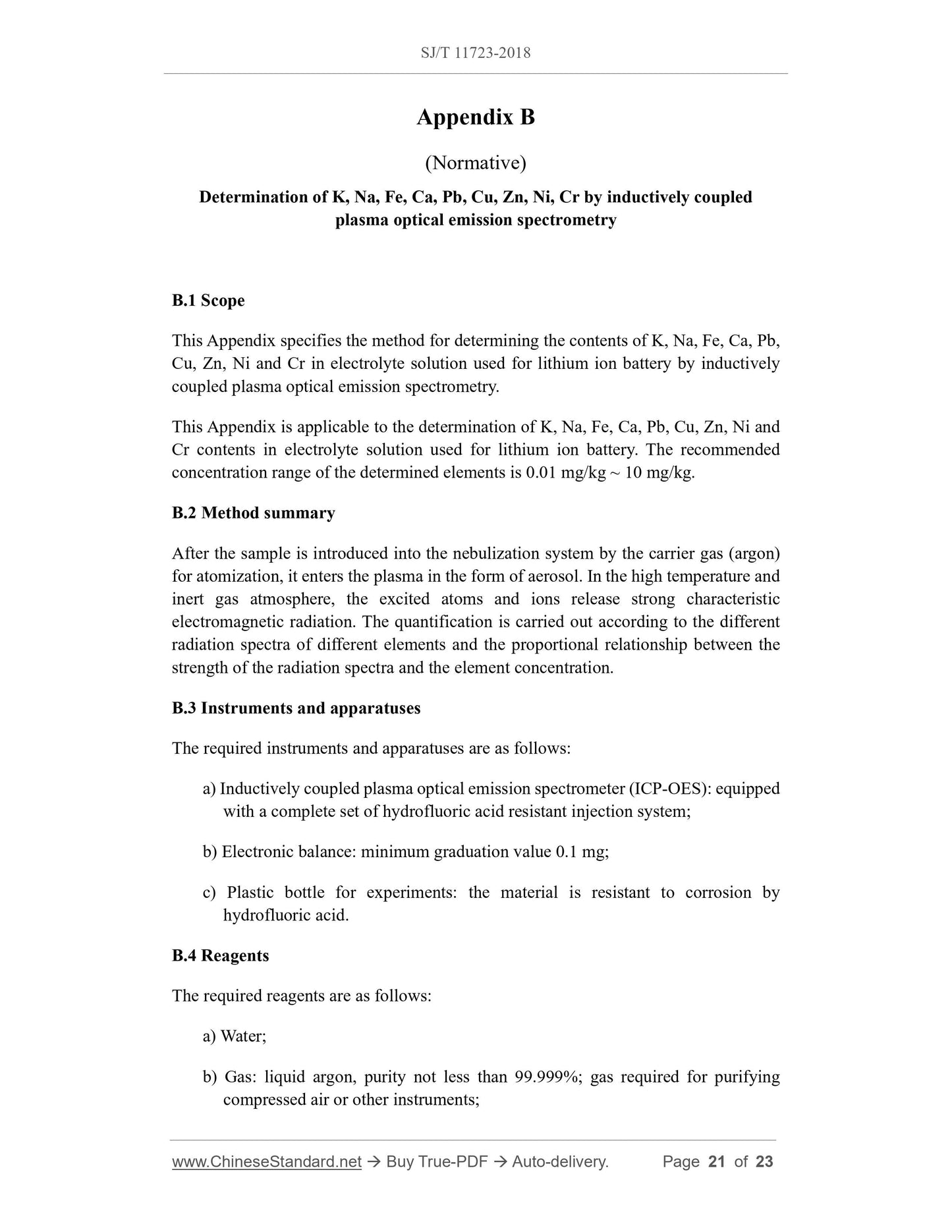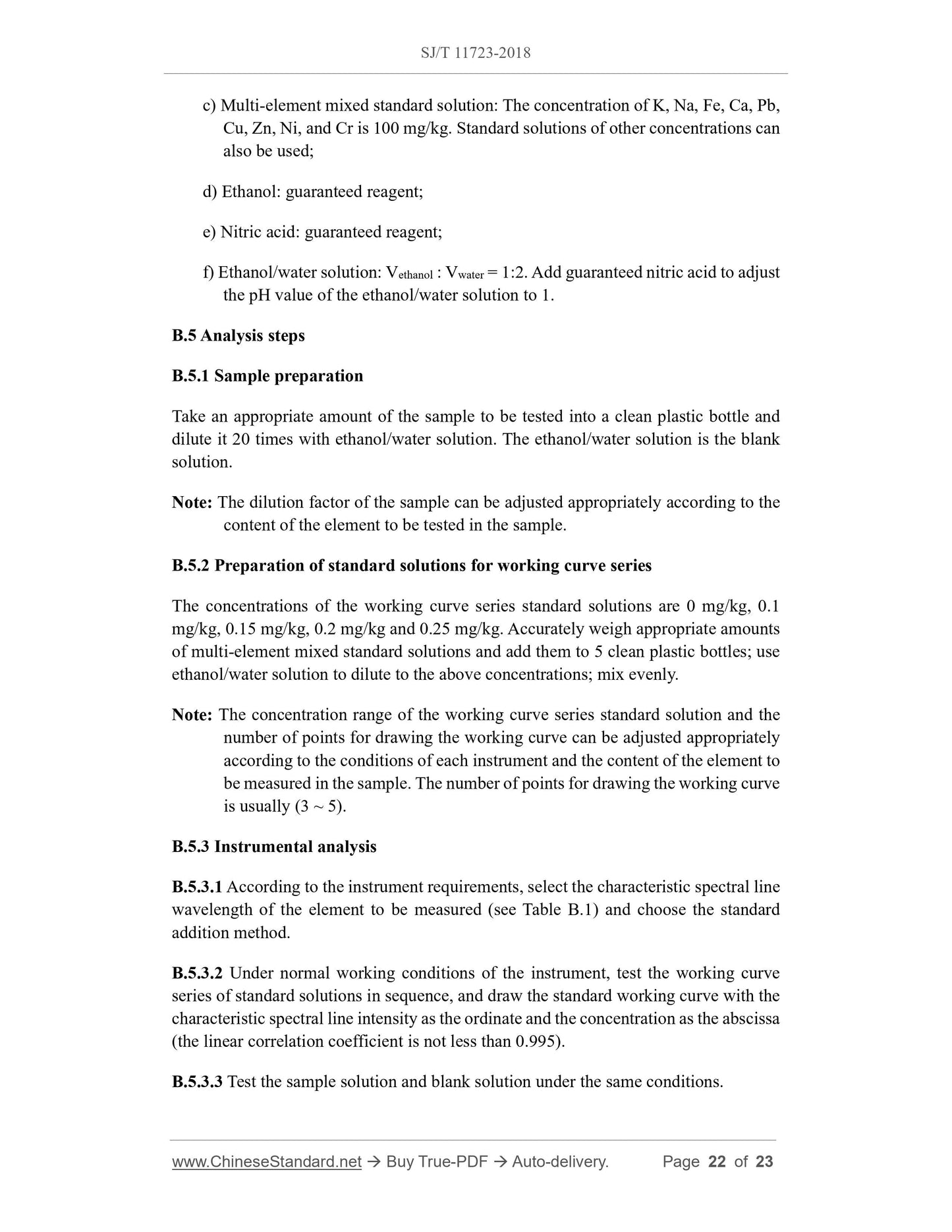1
/
of
12
www.ChineseStandard.us -- Field Test Asia Pte. Ltd.
SJ/T 11723-2018 English PDF (SJ/T11723-2018)
SJ/T 11723-2018 English PDF (SJ/T11723-2018)
Regular price
$320.00
Regular price
Sale price
$320.00
Unit price
/
per
Shipping calculated at checkout.
Couldn't load pickup availability
SJ/T 11723-2018: Electrolyte solution used for lithium ion battery
Delivery: 9 seconds. Download (and Email) true-PDF + Invoice.Get Quotation: Click SJ/T 11723-2018 (Self-service in 1-minute)
Newer / historical versions: SJ/T 11723-2018
Preview True-PDF
Scope
This Standard specifies the requirements, test methods, inspection rules, marking,packaging, transportation and storage of electrolyte solution used for lithium ion battery.
This Standard applies to the electrolyte solution used for lithium ion battery which is
composed of electrolyte lithium salts, solvents, etc.
Basic Data
| Standard ID | SJ/T 11723-2018 (SJ/T11723-2018) |
| Description (Translated English) | Electrolyte solution used for lithium ion battery |
| Sector / Industry | Electronics Industry Standard (Recommended) |
| Classification of Chinese Standard | L90 |
| Classification of International Standard | 31.030 |
| Word Count Estimation | 17,147 |
| Date of Issue | 2018-07-04 |
| Date of Implementation | 2018-10-01 |
| Regulation (derived from) | Ministry of Industry and Information Technology Announcement No.36 of 2018 |
| Issuing agency(ies) | Ministry of Industry and Information Technology |
| Summary | This standard specifies the requirements, test methods, inspection rules, marking, packaging, transportation and storage of electrolytes for lithium ion batteries. Among them, technical indicators include color, density (25 �� C), free acid, conductivity (25 �� C), moisture, metal impurities, sulfate ions and chloride ion content. |
Share
